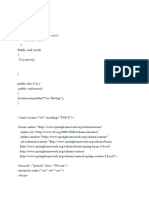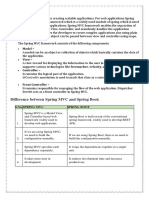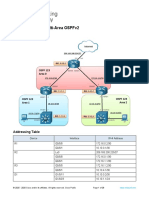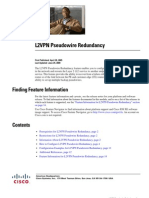0% found this document useful (0 votes)
53 views14 pagesSpring Config - Core
Spring Configuration is a framework setup for Java applications that allows customization of application behavior through three types: XML, Annotation-based, and Java-based configurations. It manages objects (beans) and their dependencies via Dependency Injection (DI), promoting modularity and reducing tight coupling. The document outlines the advantages of using beans, including lifecycle management, configuration flexibility, and support for Aspect-Oriented Programming (AOP).
Uploaded by
deeepCopyright
© © All Rights Reserved
We take content rights seriously. If you suspect this is your content, claim it here.
Available Formats
Download as PDF, TXT or read online on Scribd
0% found this document useful (0 votes)
53 views14 pagesSpring Config - Core
Spring Configuration is a framework setup for Java applications that allows customization of application behavior through three types: XML, Annotation-based, and Java-based configurations. It manages objects (beans) and their dependencies via Dependency Injection (DI), promoting modularity and reducing tight coupling. The document outlines the advantages of using beans, including lifecycle management, configuration flexibility, and support for Aspect-Oriented Programming (AOP).
Uploaded by
deeepCopyright
© © All Rights Reserved
We take content rights seriously. If you suspect this is your content, claim it here.
Available Formats
Download as PDF, TXT or read online on Scribd
/ 14





























































































